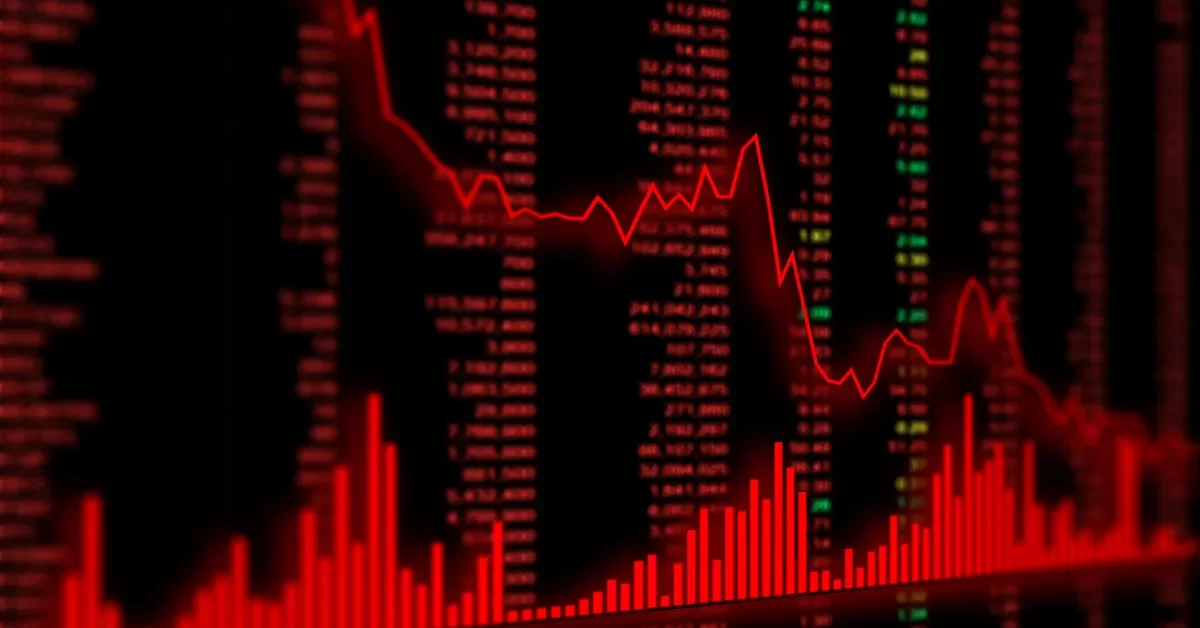The crypto market recently experienced a substantial reduction in its overall market capitalization, with prices plummeting sharply over the weekend. According to CoinGecko, the global cryptocurrency market cap today stands at $1.88 trillion, reflecting a significant 16.6% drop in just 24 hours.
Bitcoin and Ether lead the decline.
This downturn was especially notable as Bitcoin (BTC), the leading cryptocurrency by market value, fell below the $50,000 mark on Monday, August 5. Ether (ETH), the second-largest cryptocurrency, also faced significant losses, dipping below $2,500 and reaching a low of $2,200. These declines caused other cryptocurrencies to follow suit, resulting in a widespread market sell-off.
Volatility is not uncommon in the crypto space, where prices often fluctuate dramatically in response to various factors. In this instance, the latest price declines can be attributed to several key events and broader economic concerns.
Genesis Global Capital’s repayment moves the market.
One of the primary catalysts for the recent market volatility was the repayment plan by bankrupt crypto lender Genesis Global Capital. Genesis, which has been in bankruptcy restructuring for three years, began repaying its debt to creditors. According to Bloomberg, the lender distributed about $4 billion in both cryptocurrencies and fiat currencies. Specifically, BTC creditors received 51.28% of their claims, ETH creditors obtained 65.87%, and Solana creditors got 29.58%.
On Friday, Genesis moved over $1.5 billion worth of BTC and ETH. On-chain data from Arkham Intelligence revealed that the firm transferred 16,600 BTC (valued at approximately $1.1 billion) and 166,300 ETH (worth about $521.1 million). Among the recipients was billionaire Mark Cuban, who received $19.9 million worth of Ethereum.
This significant movement of funds caused market volatility, as many investors reacted by liquidating their holdings. The influx of new money into the market led to a drop in prices, as repaid creditors likely decided to cash out their digital assets after a prolonged wait, adding to the selling pressure and exacerbating the price drop.
Other bankrupt crypto companies follow suit.
Genesis Global Capital is not the only bankrupt crypto company engaged in creditor repayments recently. The bankrupt BTC exchange Mt. Gox has also been repaying its creditors for the past few weeks. These large movements of funds continue to impact the market as creditors receive their repayments, contributing to ongoing volatility.
FOMC’s Rate Cut Delay
Before the Federal Open Market Committee (FOMC) meeting on July 31, the crypto market experienced a significant uptrend fueled by hopes of an impending rate cut by the Federal Reserve. However, the FOMC’s decision to maintain interest rates at 5.25% – 5.5% while hinting at a potential cut in September dampened market enthusiasm, leading to a bearish shift in sentiment. Bitcoin critic Peter Schiff further cast doubt on the Fed’s strategy, suggesting that rather than reviving the economy, a rate cut could exacerbate inflationary pressures. This combination of unmet expectations and skepticism contributed to the recent downturn in the crypto market.
Broader Economic and Geopolitical Concerns
The crypto market’s recent downturn is also linked to broader economic and geopolitical concerns. BTC fell below key support levels as markets continued to bleed over the weekend due to fears of an impending global recession and escalating tensions in the Middle East.
Several countries have urged their nationals to leave Lebanon, fearing a wider conflict in the region. Iran has vowed to retaliate against Israel, which it blames for the death of Hamas political chief Ismail Haniyeh in Tehran. Diplomatic efforts by the US and other Western countries continue to try to de-escalate tensions across the region.
These geopolitical fears have led to a market-wide sell-off. BTC, the flagship cryptocurrency, has fallen more than 13% in the past 24 hours. Similarly, ETH saw its lowest value since April, dropping over 20% to $2,200 before attempting a recovery. Other altcoins, including Solana, BNB, Dogecoin, and Avalanche, experienced similar declines, ranging from 14% to 18%.
Market Liquidations and Trading Volume
Data from Coinglass reveals that the cryptocurrency market witnessed a total liquidation of $1.029 billion in the past 24 hours. Long positions accounted for $894 million, while short positions saw liquidations amounting to $136 million. BTC experienced a total liquidation of $347 million, and ETH saw liquidations totaling $340 million.
Total cryptocurrency trading volume in the last day is at $226 billion. At the time of writing, BTC dominance stands at 53.8%, while ETH dominance is at 14.5%.
Read also: Meme coins suffer over 14% drop in market cap.
Macroeconomic Fears and the Path Forward
The crypto market has plunged to multi-month lows as worries over a possible US recession, in the wake of soft economic data, gripped financial markets and triggered a rush to safe-haven assets. The market had received a boost earlier this year after the U.S Securities and Exchange Commission approved an exchange-traded fund to track the spot price of BTC and ETH. However, BTC has recently fallen alongside other assets, including global equities, in a broad sell-off as investors fear an impending U.S recession.
Read also: Historic U.S SEC approval paves way for spot Bitcoin ETFs trading.
BTC has lost over a third of its value since hitting a record high in March 2024. Despite attempts at recovery from key support levels, the market continues to experience heavy selling pressure.
Robert Kiyosaki, the author of ‘Rich Dad Poor Dad,’ views market crashes as opportunities for the brave to become wealthier while those who panic or do nothing remain poor. He believes that during such downturns, smart investors should stay calm, resist the urge to sell, and instead take advantage of lower prices to invest, thus positioning themselves for future gains when the market recovers. Kiyosaki’s philosophy emphasizes the importance of maintaining a level-headed approach and seizing opportunities when others are fearful.
Peter Schiff, a prominent economist and market strategist, highlighted BTC’s recent volatility, noting that it traded below $50,000, marking a 22% decline since Friday’s U.S stock market close and a 45% drop from its November 2021 peak when priced in gold. He pointed out that while BTC briefly recovered above $50,000, he expects further declines once the stock market reopens and ETF holders have the opportunity to sell.
Investors should remain calm and avoid panic selling during market downturns. Typically, focusing on the long-term potential of these investments rather than short-term price fluctuations is the way a number of successful investors get their rewards. Also, some of these successful investors diversify their portfolios in order to spread risk and reduce potential losses. It is at times such as this that some investors buy high-quality assets at lower prices, if it fits their financial strategy and risk tolerance. This is not financial advice, however. If you need financial advice, consult a professional. In any case, staying informed about market developments and maintaining a disciplined approach to investment decisions is essential.
Read also: Bitcoin hovers around $60K as U.S. spot bitcoin ETFs record biggest daily outflow in 3 months.
Solomon Victor is a Technical Analyst who is also knowledgeable about various aspects of blockchain and cryptocurrency.
Discover more from Crypto Asset Buyer
Subscribe to get the latest posts sent to your email.



